Two Shining Souls
Two Shining Souls
Jane Addams, Leo Tolstoy, and the Quest for Global Peace
James Cracraft
LEXINGTON BOOKS
Lanham Boulder New York Toronto Plymouth, UK
Published by Lexington Books
A wholly owned subsidiary of The Rowman & Littlefield Publishing Group, Inc.
4501 Forbes Boulevard, Suite 200, Lanham, Maryland 20706
www.rowman.com
10 Thornbury Road, Plymouth PL6 7PP, United Kingdom
Copyright 2012 by Lexington Books
All rights reserved. No part of this book may be reproduced in any form or by any electronic or mechanical means, including information storage and retrieval systems, without written permission from the publisher, except by a reviewer who may quote passages in a review.
British Library Cataloguing in Publication Information Available
Library of Congress Cataloging-in-Publication Data
Cracraft, James.
Two shining souls : Jane Addams, Leo Tolstoy, and the quest for global peace / James Cracraft.
p. cm.
Includes bibliographical references and index.
ISBN 978-0-7391-7450-0 (cloth : alk. paper) -- ISBN 978-0-7391-7451-7 (electronic)
1. Addams, Jane, 1860-1935. 2. Addams, Jane, 1860-1935--Travel--Russia. 3. Women social workers--United States--Biography. 4. Women social reformers--United States--Biography. 5. Tolstoy, Leo, graf, 1828-1910. 6. Pacifism--History--20th century. I. Title.
HV28.A35C73 2012
361.92--dc23
[B]
2012012641
 The paper used in this publication meets the minimum requirements of American National Standard for Information Sciences Permanence of Paper for Printed Library Materials, ANSI/NISO Z39.48-1992.
The paper used in this publication meets the minimum requirements of American National Standard for Information Sciences Permanence of Paper for Printed Library Materials, ANSI/NISO Z39.48-1992.
Printed in the United States of America
It may be no clearer to us than it was to him, that a righteous life cannot be lived in a society that is not righteous. It was clearer to him than it has been to any others, save to a small handful of shining souls, that the true man can attempt nothing less, and that society can be made righteous in no other way.
Jane Addams, introduction to Leo Tolstoy,
What Then Must We Do?
Preface
Writing this book has truly been a labor of love. I first read something by Tolstoya bowdlerized edition of War and Peacein high school. In college, his military tales set in the Caucasus and in the Crimea supplemented readings for an introductory Russian history course. As a graduate student, during my first trip to Russia (then the Soviet Union), I visited the Tolstoy estate-museum at Yasnaya Polyana (Clear Glade, the Clearing), his country home situated some 130 miles south of Moscowa moving experience, as he is buried there in a peaceful glen and much of the house including its furniture and library has been preserved as he left it. Later on, as a young history professor doing research in Russia, I visited his Moscow home, also carefully preserved and similarly full of Tolstoy memorabilia. In time I acquired a sizable collection of books by and about Tolstoy. I determined that someday I would write something about him, perhaps as the cynosure of a Russia that had been so obviously and tragically lost. The theme was suggested by a French professor of Russian one evening at dinner in St. Petersburg (then Leningrad), when, looking out the restaurant window, he rather glumly exclaimed: Ce nest pas la Russie de Tolstoi!
All that was before I met Jane Addamsnot literally, of course. Early in my professional career I accepted a position at the University of Illinois at Chicago. As everybody in Chicago knows, a chunk of the UIC campus occupies the site where the Hull-House Settlement once stoodat its height a complex of thirteen buildings covering much of a city block. Today, only the original Hull mansion remains, a much restored shrine to Jane Addams and her work. At some point in my years at the university I was assigned a parking place in the garage located directly across Halsted Street from the Hull-House Museum, which meant that I regularly walked by it on the way to and from my office. Occasionally I stopped to have a look around and to chat with the staff, all busily preparing for the next conference, school group, visiting scholar, stray student, or tourist. My burgeoning interest in this tutelary spirit of the UIC campus was only strengthened on visiting her childhood home at Cedarville in rural northern Illinois, where she is buried in a fine old cemetery. The visit was my wife Nancys idea; she has family connections in the area and had long been a fan of Jane Addams.
So it was with considerable feeling that I discovered one day that Addams greatly admired Tolstoy and traveled all the way to Russia to meet him. Why? What could have drawn the pioneer of twentieth-century social work in America to the great nineteenth-century Russian writer? What could they have had in common? This book attempts to answer these and related questions by drawing in significant part on hitherto neglected or unknown materials found in both Russian and American repositories. But I should confess at its outset that as the work progressed my somewhat pro forma esteem for Jane Addams waxed into something deeper, even as my youthful enthusiasm for Tolstoy waned into something more complicated: an admiration mixed with wariness, perhaps, and more than a touch of exasperation. This more complicated attitude toward a hero of my youth I owe, in short, to her. At the same time, viewing Jane Addams in the perspective of her decades-long encounter with Tolstoy modifies in certain important respects the portrait thats been painted by her admirers, a point I try to make clear in my concluding chapter.
But in this book I am most concerned to set out the facts of this amazing encounter, which has passed almost entirely unnoticed by students of Tolstoy and been rather marginally treated, with multiple errors, by Addamss biographersmost likely because, not knowing Russia and Russian, they could not pursue the Russian side of the story in the Russian sources and related scholarship. It is the unlikely connection of these two separately famous people, and what their encounter tells us about each of them and about their times, that I find fascinating. Put otherwise, the book is not another biography of either Addams or Tolstoyplenty of those existbut rather a study in the interchange of radical ideas across national, generational, gender, and other boundaries. It is the story, with Addams as its fulcrum, of Tolstoys initial reception in America and subsequent influence on American culture. It is the story, more basically still, of Addamss spiritual journey from its beginnings in the conventional Protestantism of postCivil War America to its culmination in a quasi-mystical belief, sanctioned by the philosopher William James, in the transformative power of the good deed for both the doer and society.
The story of Jane Addamss encounter with Tolstoy also raises issues of public concern that are very much with us today. They include the often conflicting demands on the individual, particularly on women, of family and society; the legitimacy of violence in pursuit of political aims; the problem of poverty; the role of government in social reform; and the place of religion in both public and private life. The distinctive ways in which these emblematic figures dealt with such issues offer lessons that may be valuable even now.
Still more, it gradually transpired in the course of my research that the single most important link between Addams and Tolstoy was their preoccupation with the question of peace. Both became committed pacifists at a time when the word pacifism was invented and the cause of global peace first attracted large numbers of people. Peace in their use of the term was a comprehensive value or good that subsumed, rather than replaced or complemented, all other values or goods: happiness, prosperity, wisdom, fame, social justice, success, national honor, godliness, and whatever else people hold dear. Peace, for them, was the highest truth. And the quest for peace, they insisted, was indivisible, or globalat once a personal and a social, therefore also a national and an international, undertaking. So this book is also about the steps each of them took in their pursuit of global peace. It is about, in that connection, the great crisis in the history of global pacifism precipitated by World War I.
Next page
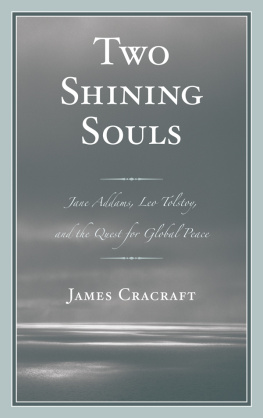
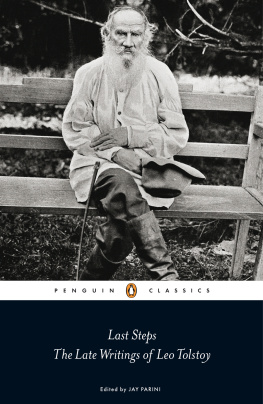

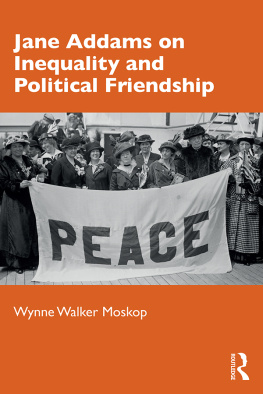
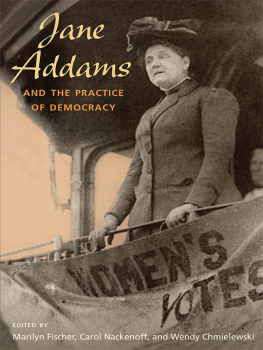
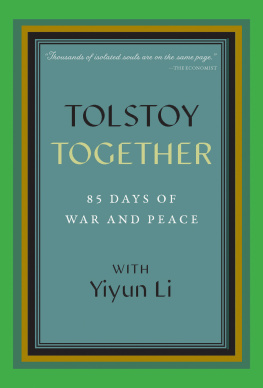

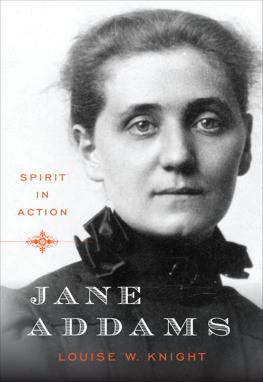
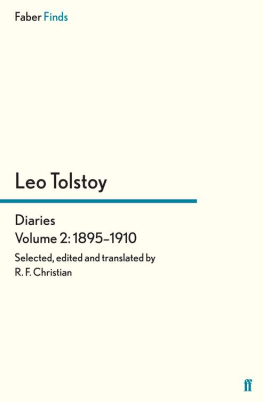
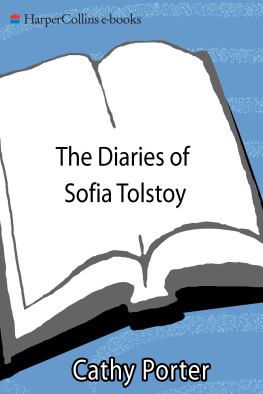

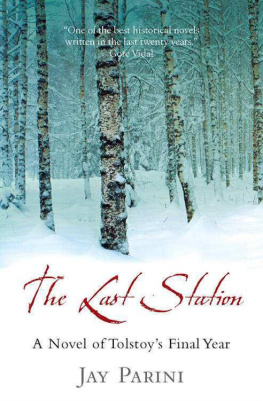
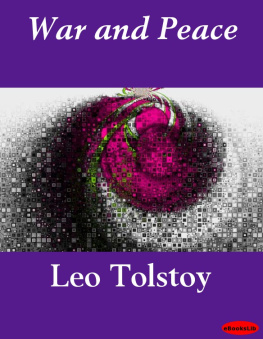
 The paper used in this publication meets the minimum requirements of American National Standard for Information Sciences Permanence of Paper for Printed Library Materials, ANSI/NISO Z39.48-1992.
The paper used in this publication meets the minimum requirements of American National Standard for Information Sciences Permanence of Paper for Printed Library Materials, ANSI/NISO Z39.48-1992.